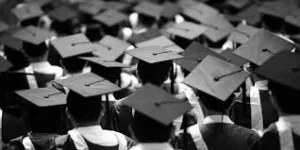The United States of America and China Education systems have been formed under different conditions. They pursue different aims and that is why they have a lot of differences. China is considered the world’s factory and so it aims to make great workers of their students. The USA is a center of science and innovation with their outstanding companies like Tesla, Apple, and the Silicon Valley groups. They are the world’s designers. Both systems have something to learn from each other.
When you apply for a University in the US, you should know what will await you. Here is a list of things that are different between the Chinese and the American Higher Education Systems.
Entrance Selection
The entrance requirements into the US universities are very different from the Chinese ones. Firstly, the examinations and tests are much more variable. There are the SATs – the exams established by each university in order to check the knowledge of the students. Then, there is the GPA- an average of the grades you get while attending school. Then, there is a well-written thought-through application, an Essay and a letter of Recommendation from school or some other facility. The last two are not always obligatory but will surely increase the chances of your enrollment. All of the requirements are aimed at determining the students’ individuality as well as their qualifications. Apart from that, the students can choose their major courses themselves depending on their hobbies and views.
China is different from the US in this area. Individualism is not characteristic of Chinese but collectivism is much more common. That is why the majors that are needed for the country are considered more lucrative and students base their specialties on the needs of the society. The enrollment is decided upon the results of a unified test.
Teaching Methods
There are fundamental differences between the way professors conduct themselves with the students in the US and in China.
In America, the teacher is supposed to inspire and lead the students into a fruitful learning process. In a lot of cases, teachers encourage students’ ideas to propose new things and discuss them with the class. The whole group becomes a sort of a club where the teacher is the host and a moderator. This brings about the creativity and communicativeness in the students, which is a great help for their future careers.
In China, the learning process often consists of the lector who dictates new material to the students who are bored and drowsy. They write down his lectures and at the end of the semester learn them by heart. In a couple of months, they can’t recall a single thing.
Curriculum Structure
The basic structure of the curriculum in China and the US is similar. There are the fundamental sciences, professional subjects that enhance practical skills and the elective courses to broaden the overall education level of the students. However, there are major differences in the attitude towards those subject groups.
In the USA, the fundamental subjects take up to 35-50% of the credits, 1/3 of the time is dedicated to elective courses and the rest to professional practical studies. The diversity of the courses is greatly supplemented by the courses students elect for themselves. They are an important part of the education program and they nurture a creative and liberal approach to the problems.
Chinese curriculum is aimed at providing “job skills” – practical knowledge that helps people use certain equipment and carry out specific tasks. Fundamental sciences take up only up to 30% of the total studying time, which is obviously not enough to provide a theoretic base to solve complex problems. Elective courses are considered inconsequential and are widely neglected. As a result, the Chinese universities provide students who are good workers but are bad at problem-solving.
Criteria
The evaluation criteria of different schools are quite similar to the ways teaching methods are established in The USA and in China.
In China, memorization of everything is very important. If you forget a complex formula, you are in big trouble since you won’t be able to finish a task. That’s why students cram like crazy during the mid-terms. The final exams of the subject determine 70% of the grade so everything depends on this single day. That leads to students getting discouraged or demotivated during the semester. And considering that the Grade depends on a single person in a single day whom they might not even know will definitely lower the motivation.
In the US, the main purpose of the system is to check understanding and problem-solving capabilities. You can write down the most complex formulas beforehand and use them during the exam. The main point is to understand a way to solve the task with the tools at hand. In addition to that, the final Exam only influences 35% of the total score while 65% is distributed between home assignments, projects, attendance and so on. The general performance of the students is evaluated. That way, people who work consistently but are, perhaps, not feeling well on the exam day or just shy won’t be put at a disadvantage. The system is more just and motivates people to work consistently, not just cram everything for a single day.
Conclusions
These are the main differences between the education systems of the two countries. There are certainly many more features that can leave a foreign student very confused about the aspects of US education. For example, you can study as much as you like in the USA and major in all the subjects the university has to offer. Just pay for the tuition. Or, social work and volunteering are extremely important to get the credits you may lack. In order to understand all the nuances and make your transition from China into the US as smooth as possible, you should look at some website resources like the Forward Pathway website. Not only do they have application information but if you have any questions you can consult with their specialists who are always ready to help.








